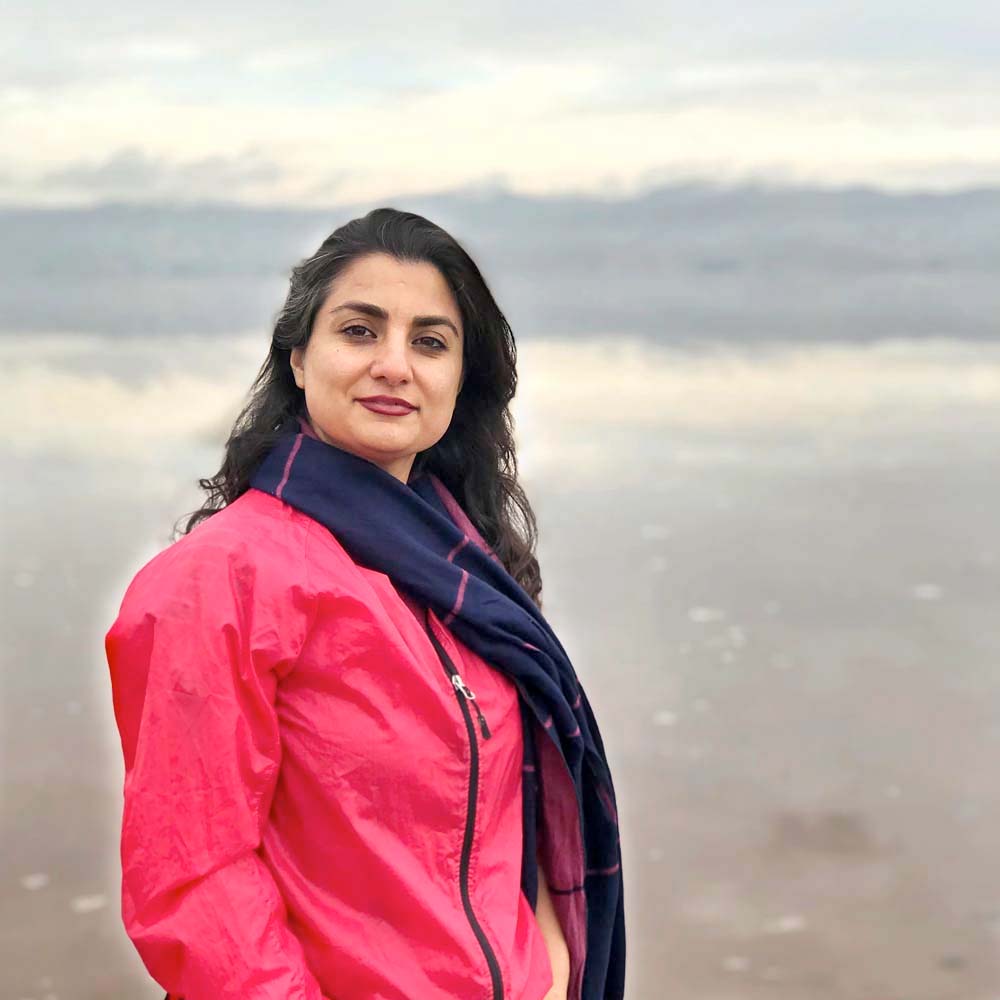

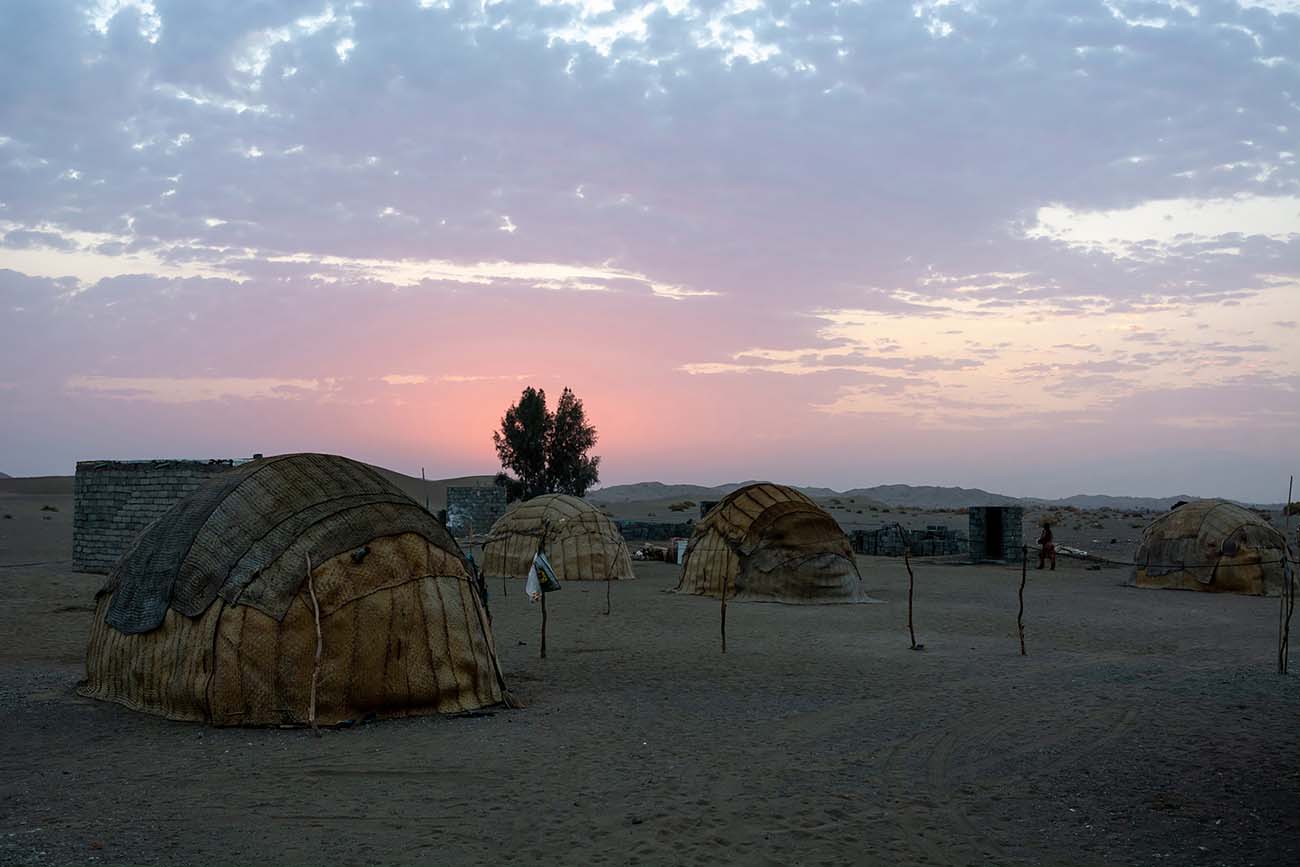
© Sajedeh Zarei
Wicker houses at dawn. These tents are called davar. Their davar is made of date palm leaves, patches of old cloth and mat, and is very basic. With the exception of a few non-standard brick houses with no facilities built by the help of the government in the area, most of the houses in the area are davar and are not secured against wind, dust, rain and cold. Here is one of the most deprived regions in Iran. Sowlan, Ghalehganj, Kerman province, Iran, 2019.
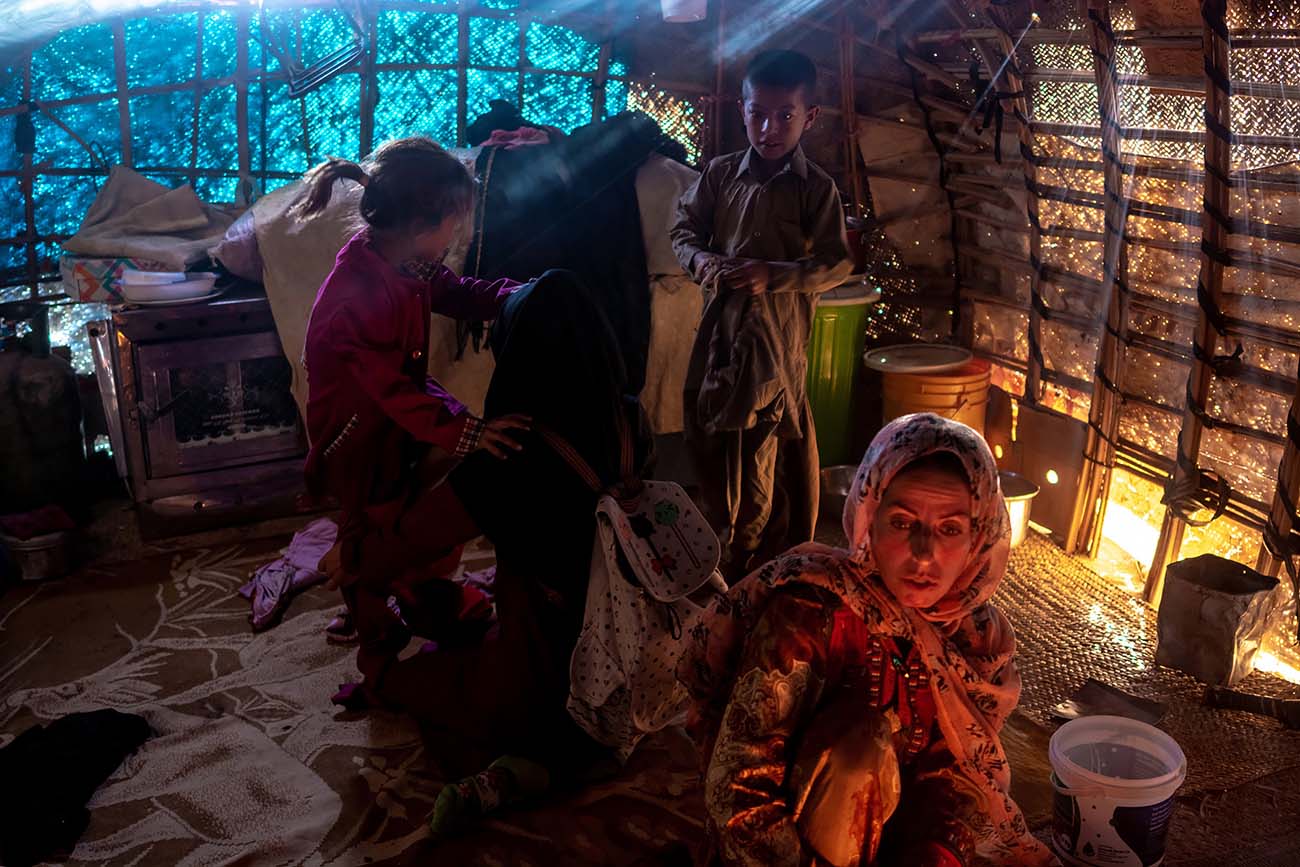
© Sajedeh Zarei
Nasibeh (7) and Mahdi (8) are currently attending school. Fatemeh (10) is helping Nasibeh to get ready for school. They came from desert to village last year. A charity got certificate for them so seven children of different ages are now in the first grade of primary school. Aside simple school, there is a very visible lack of educational and recreational facilities in region. However, Mandoust (39), Nasibeh's father says: "Our life in the desert was very bad and we are in good condition right now that we are in the village. There is a school here and also electricity. Nasibeh, Mahdi and Yasman (10) are at first grade in elementary school and I am happy they are able to study so that they do not become illiterate and poor like me". However, Mandoust's eldest son Amir Hossein (13) still lives in the desert with camels and cannot attend school. The harsh living condition in the desert, their long-term poverty and illiteracy have convinced them to be human beings satisfied with the least opportunities. Sowlan, Ghalehganj, Kerman province, Iran, 2019.
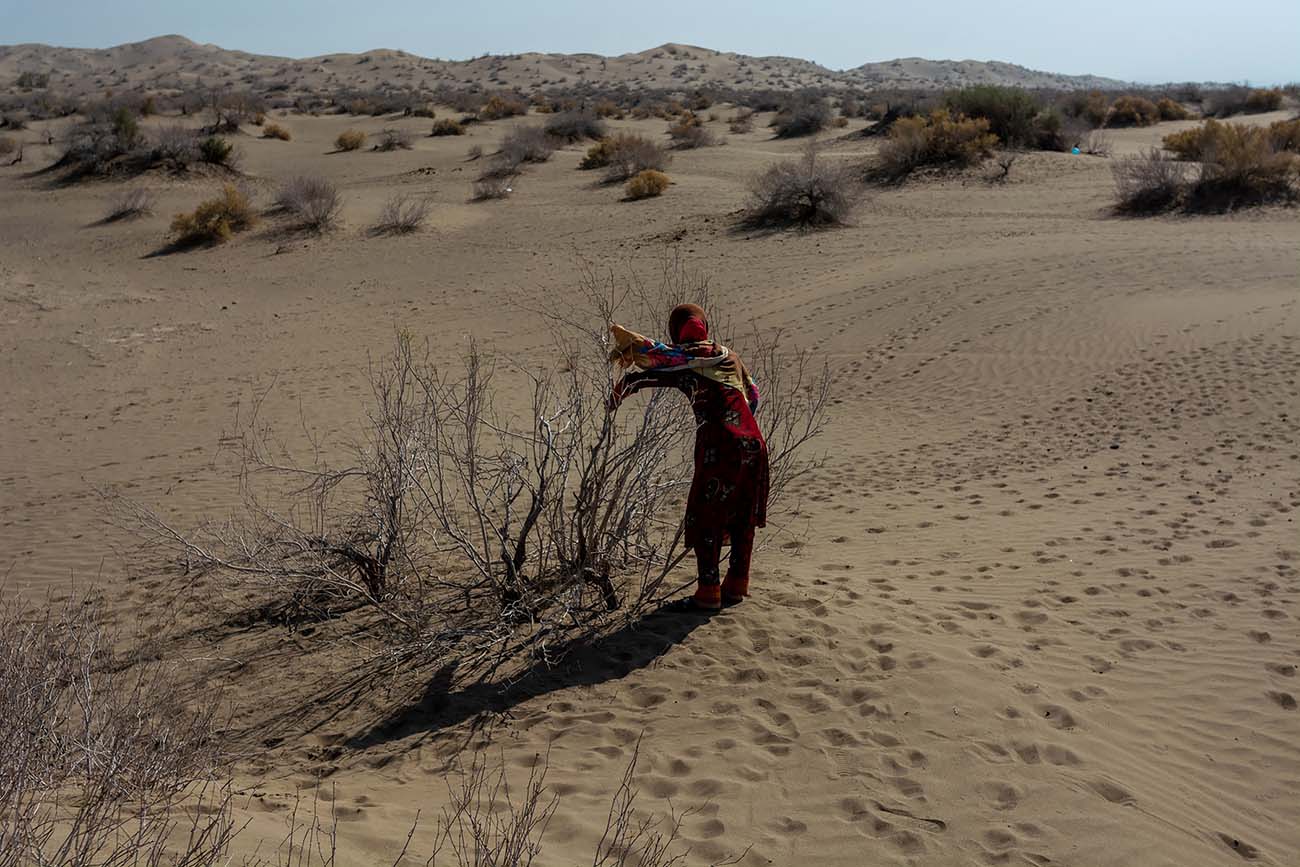
© Sajedeh Zarei
The village lacks gas piping. So, cooking and heating are provided by firewood collected from the desert which is routine tasks for women and girls. A girl is collecting firewood. Sowlan, Ghalehganj, Kerman province, Iran, 2019.
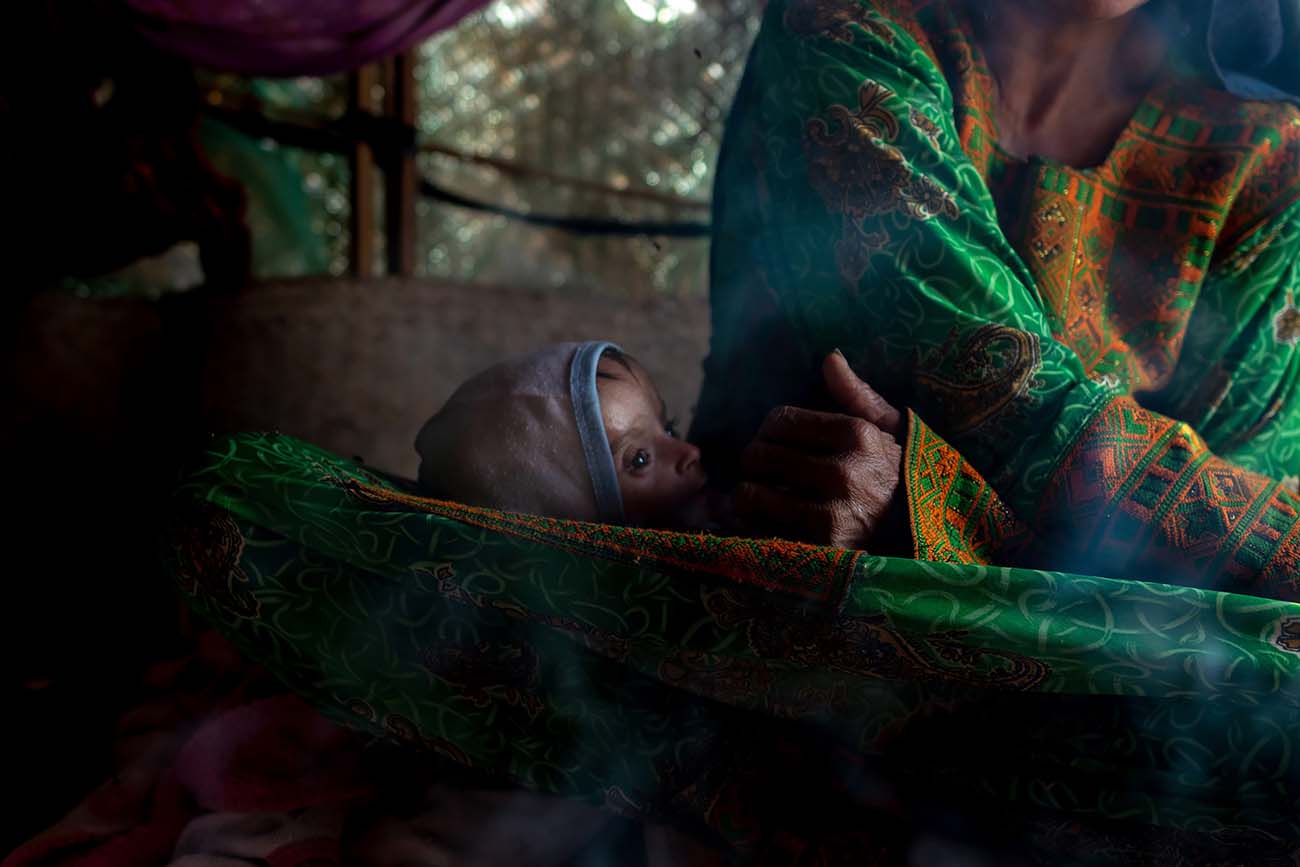
© Sajedeh Zarei
Omid (9 months old) is in her mother's arms, Leila (32) in their davar. Omid feeds on her mother's breast, and due to her mother's malnutrition, Omid is malnourished as well and is constantly restless and crying. Bread is the most important and cheapest food in the region. Villagers bake fresh bread as for their daily food. Sowlan, Ghalehganj, Kerman province, Iran, 2019.
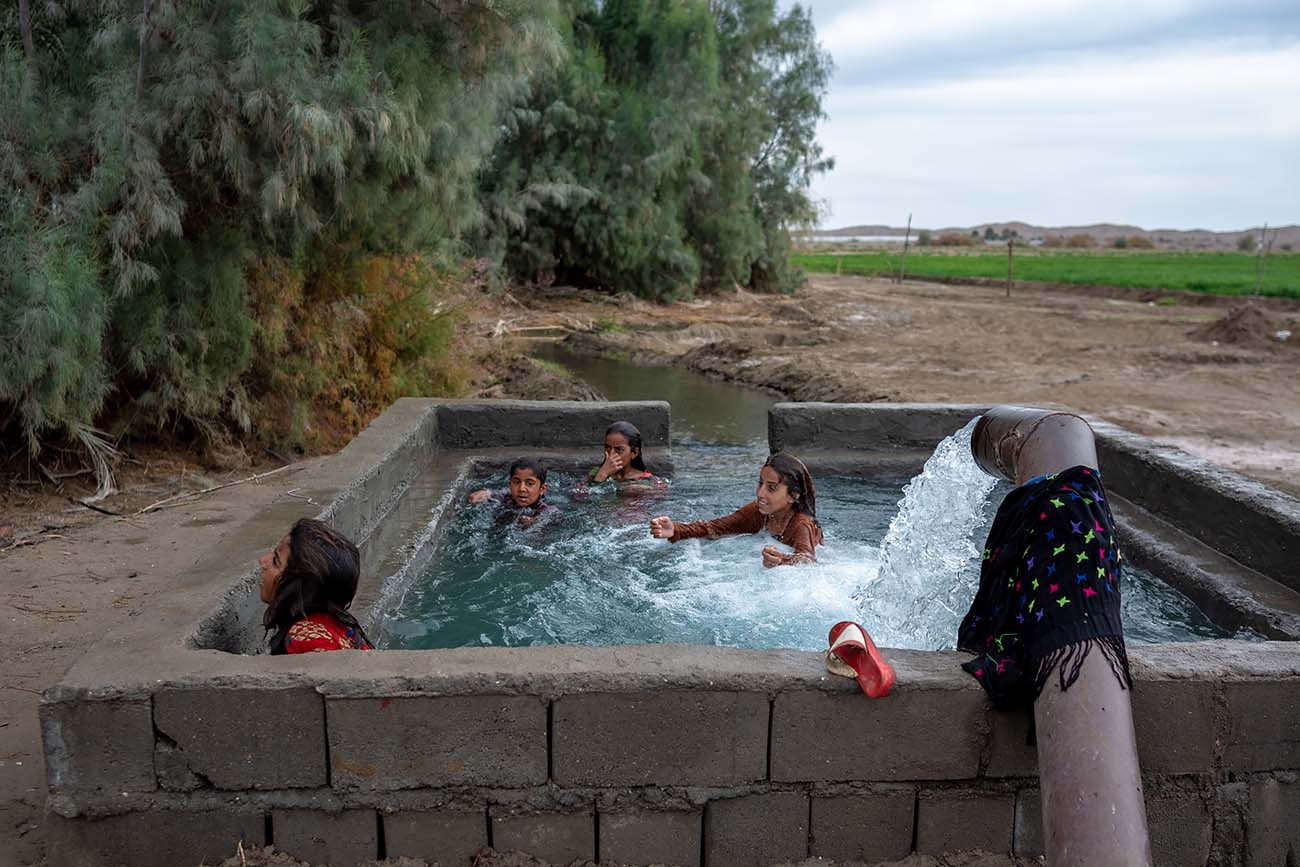
© Sajedeh Zarei
Zivar (15), Havva (8) and Yasaman (10), after feeding the calves, are taking a bath in a pond of one of the village farms. Mother camels don't have enough milk for their calves so they bring calves near the village. One calf and two bags of flour are the annual wages of keeping 250 camels in the desert paid by their father. They do not own the land. Villagers have given them lands temporarily. The place where they keep the calves is far away from their home, and these girls have to walk through desert for half an hour every time. Sowlan, Ghalehganj, Kerman province, Iran, 2019.
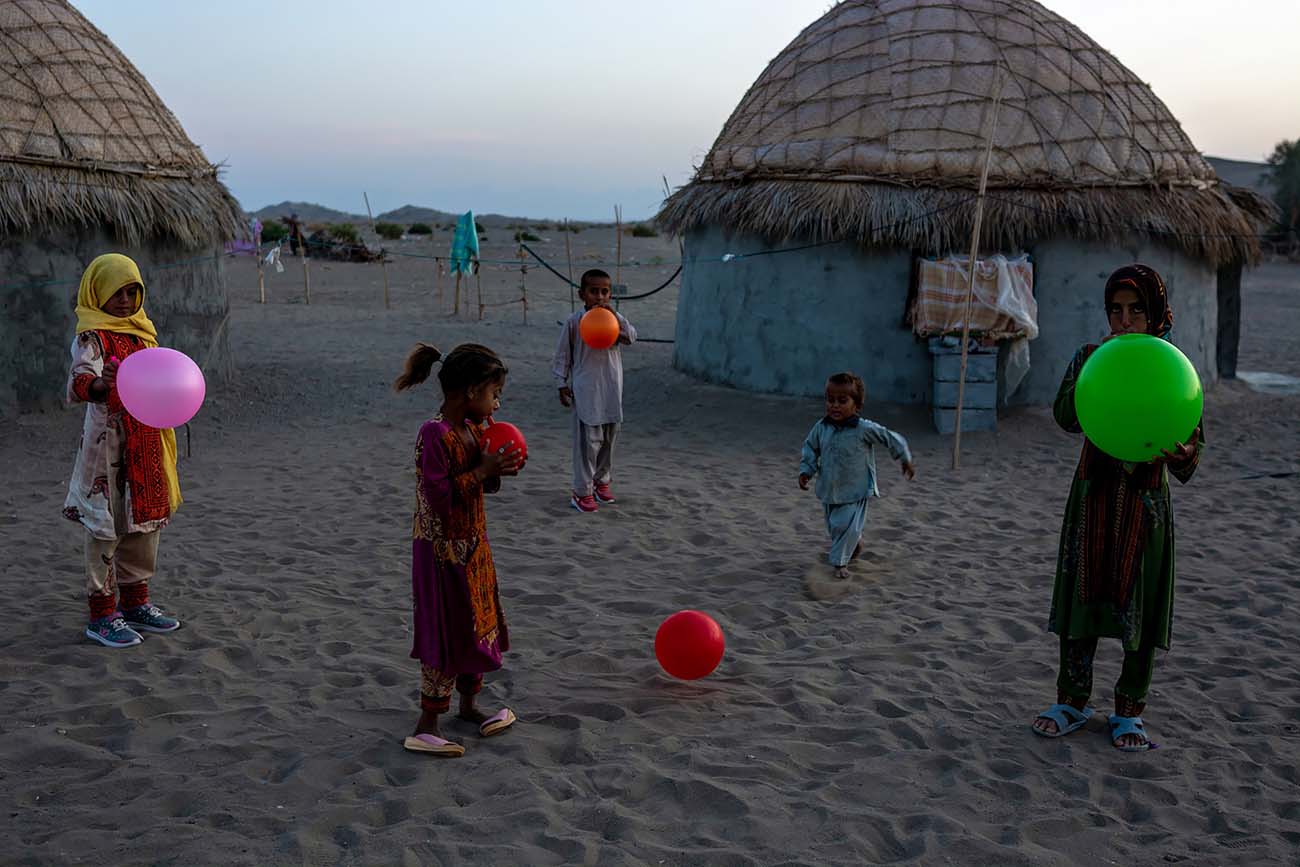
© Sajedeh Zarei
The kids are playing with kites that a benefactors gives them. They used to play with anything they could find and spend their spare time. Usually children play with an empty bottle and a piece of wood around their davars. They have no toys. There are no Recreational amenities close by for Jats. Sowlan, Ghalehganj, Kerman province, Iran, 2019.
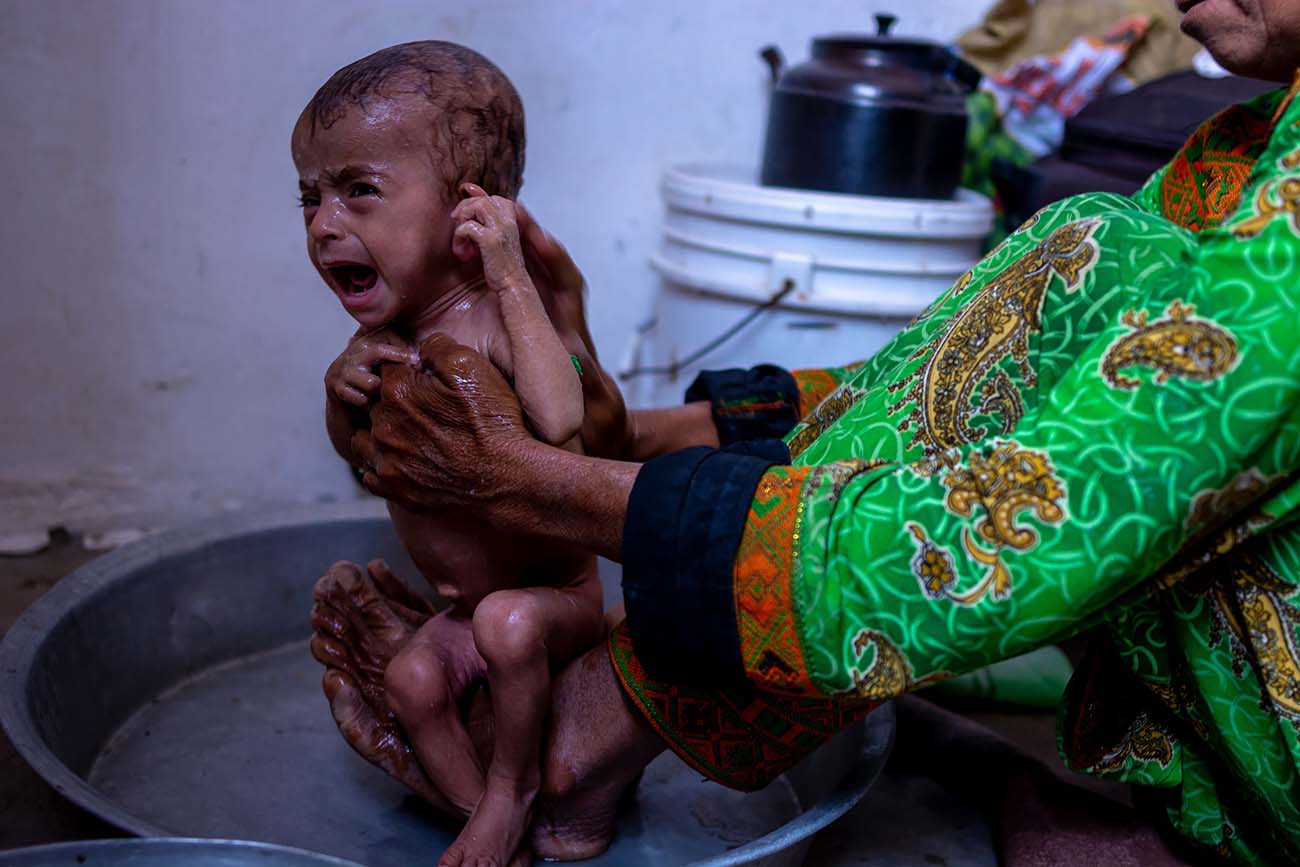
© Sajedeh Zarei
Leila (32) is giving her son, Omid (9 months) a bath. Since the family does not have hot water and proper bath room, children are washed with hot water in a metal tub in the room. Due to poor nutrition of Leila, Omid who breastfeeds, is malnourished as well. Sowlan, Ghalehganj, Kerman province, Iran, 2019.
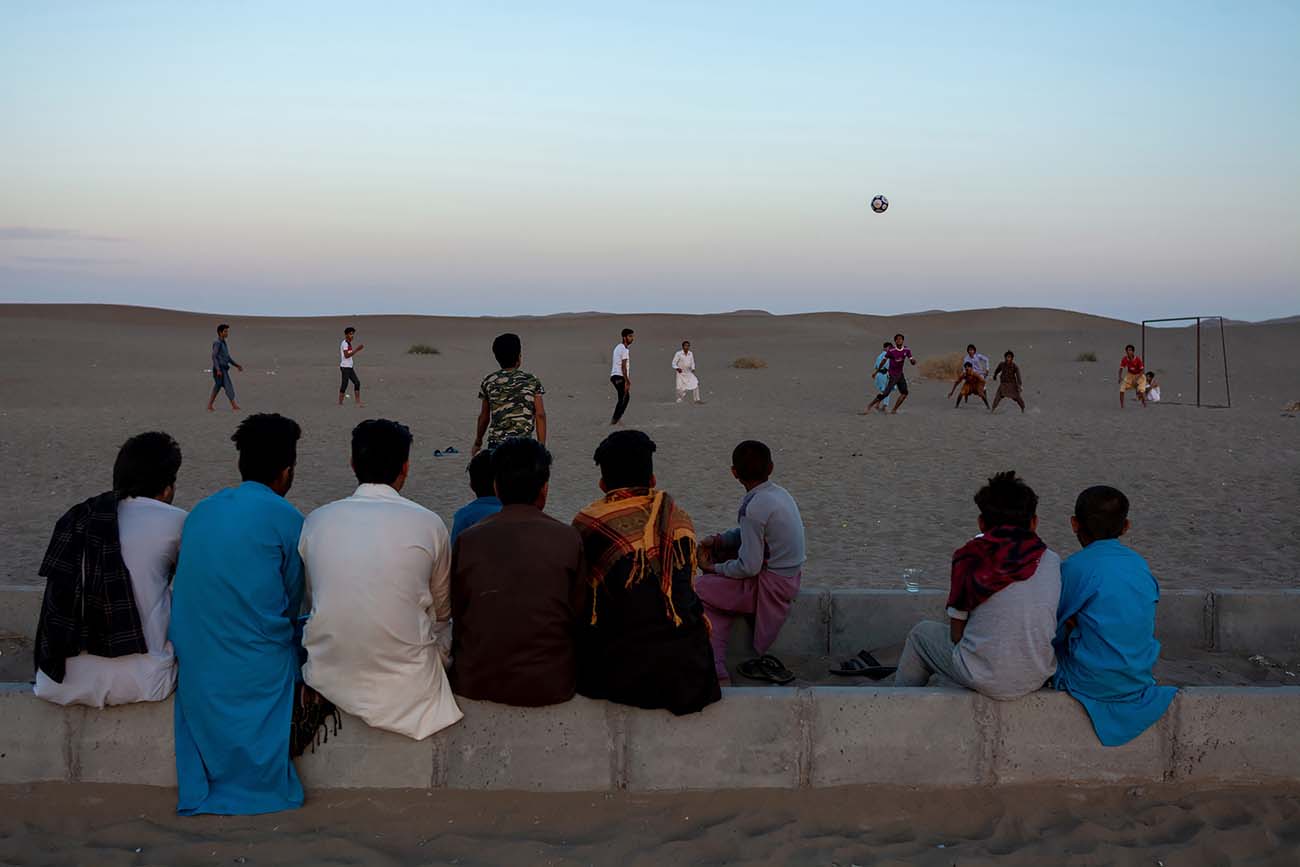
© Sajedeh Zarei
Young people are watching football game. The village does not have any recreational facilities. One of the most favorite games amongst young people is playing football. The village does have limited access to the mobile network, but no internet access. Also most of people do not have TVs due to the high poverty rate. That is why football on the sandy ground is a favorite hobby the youth of the village. Sowlan, Ghalehganj, Kerman province, Iran, 2019.
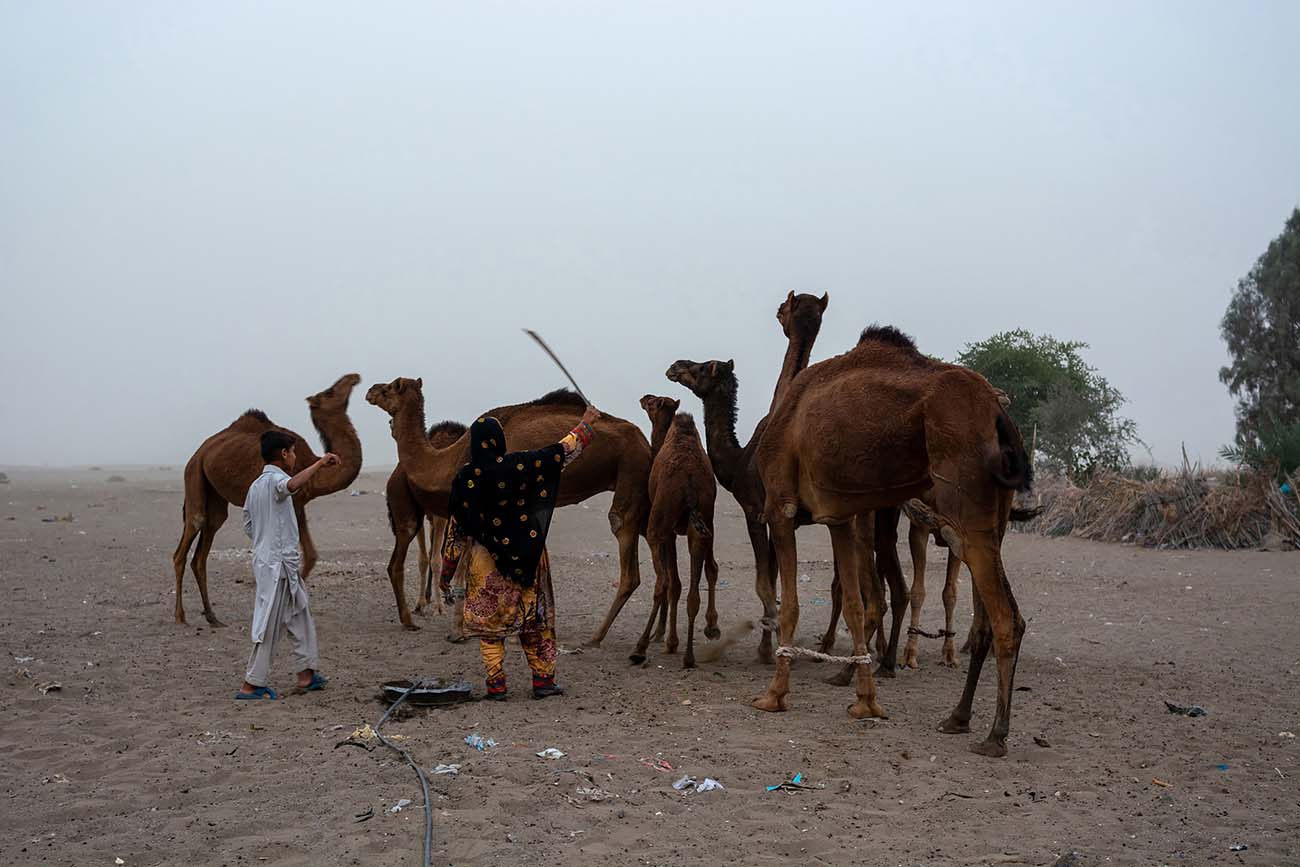
© Sajedeh Zarei
Mother and son are collecting camels that return from the desert in the evening. Drying up of the Hamun-e Jaz Murian has led to an increase in dust production, which has reduced the fertility of camels and had a direct impact on the lives of the local people.25 percent of the country's dust is from the dried-up Hamun-e Jaz Murian . Having dusty weather every day threatens the life and health people of the area. Sowlan, Ghalehganj, Kerman province, Iran, 2019.
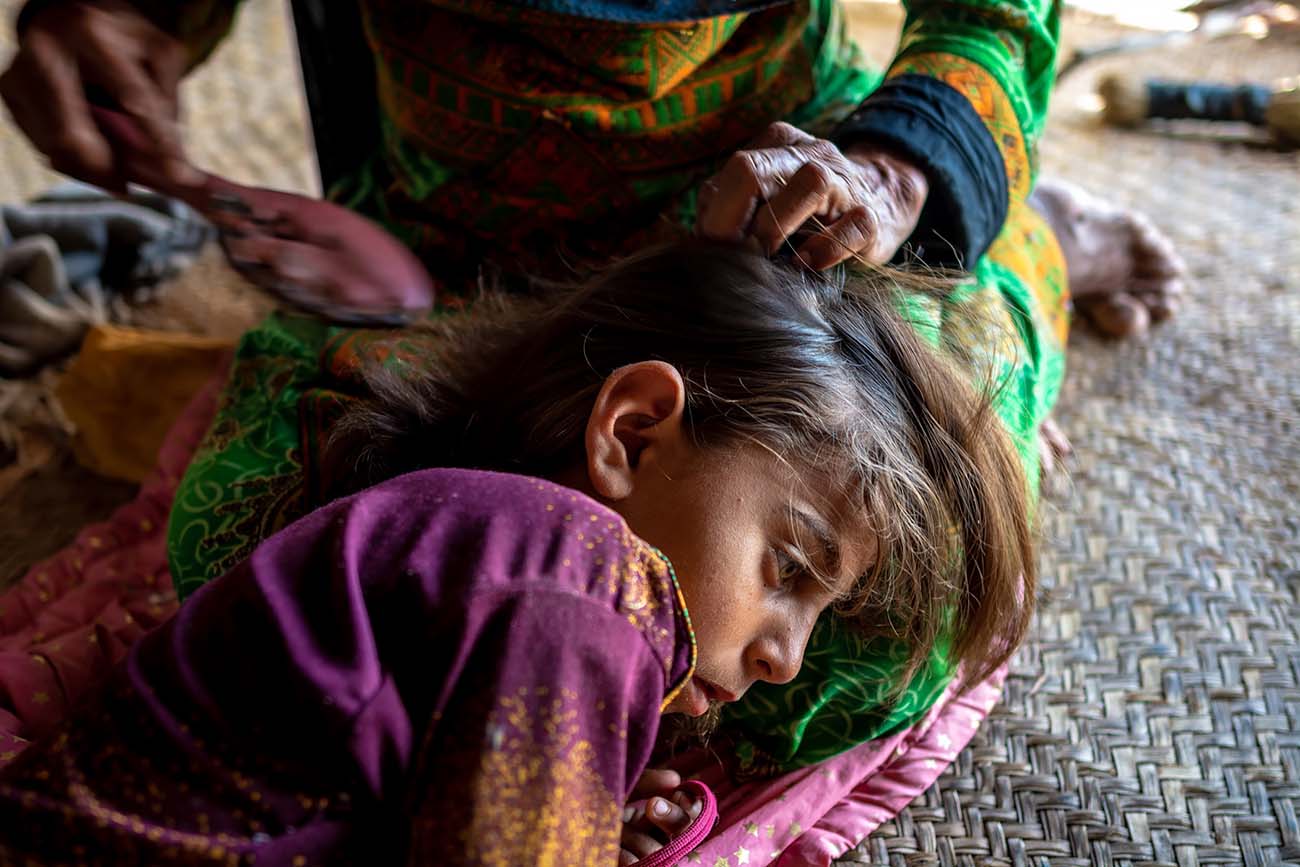
© Sajedeh Zarei
Leila (32) is delousing from her daughter's hair, Zahra (7). The village does not have any health center and if they want to use medical care, they have to go another village about 20 kilometers away. There is a very visible lack of health and recreational facilities in Sowlan, Ghalehganj, Kerman province, Iran, 2019.
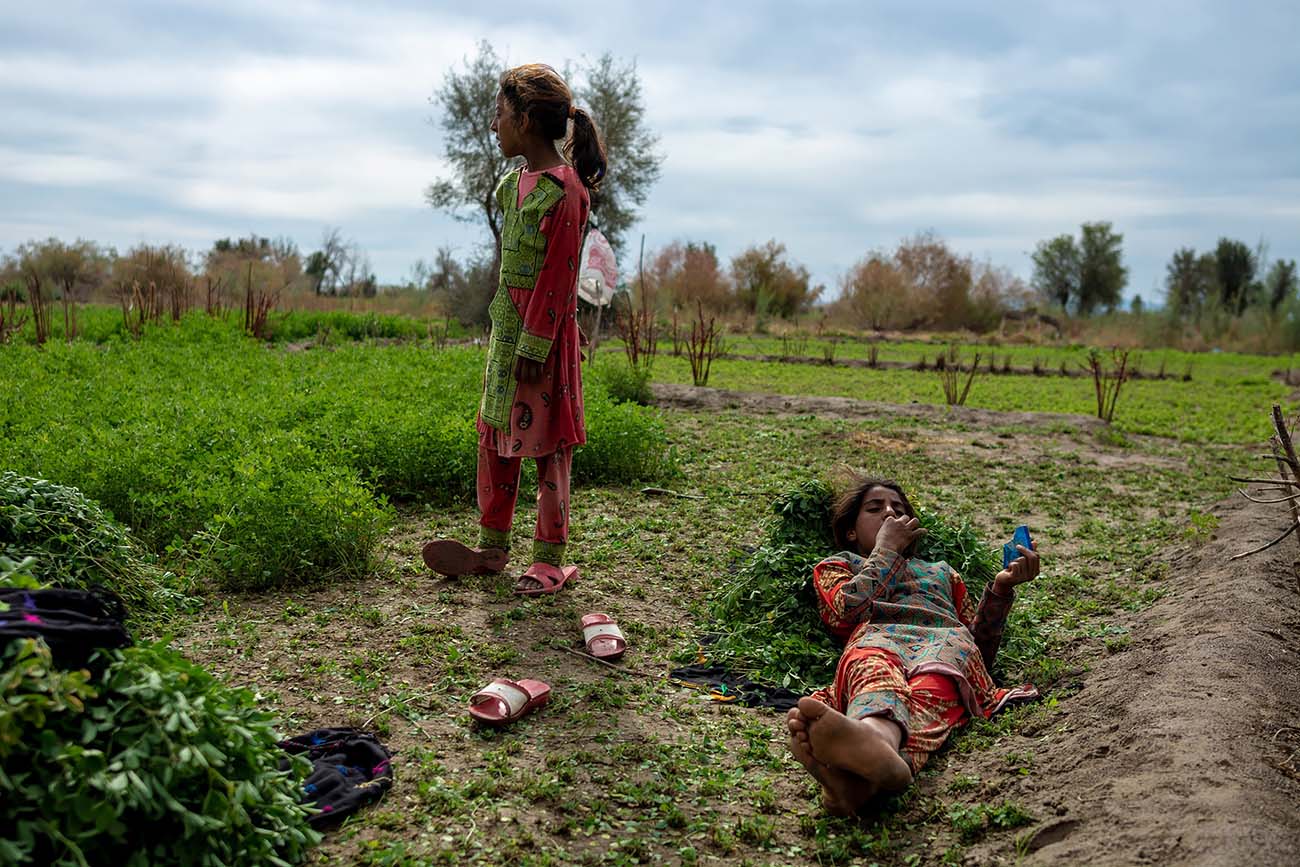
© Sajedeh Zarei
Zivar (15, right) is taking a rest after she finishes picking some fresh alfalfa for the calves. Mother camels don't have enough milk for their calves so they bring calves near the village. One calf and two bags of flour are the annual wages of keeping 250 camels in the desert paid by their father. They do not own the land. Villagers have given them lands temporarily. The place where they keep the calves is far away from their home, and these girls have to walk through desert for half an hour every time. Sowlan, Ghalehganj, Kerman province, Iran, 2019.
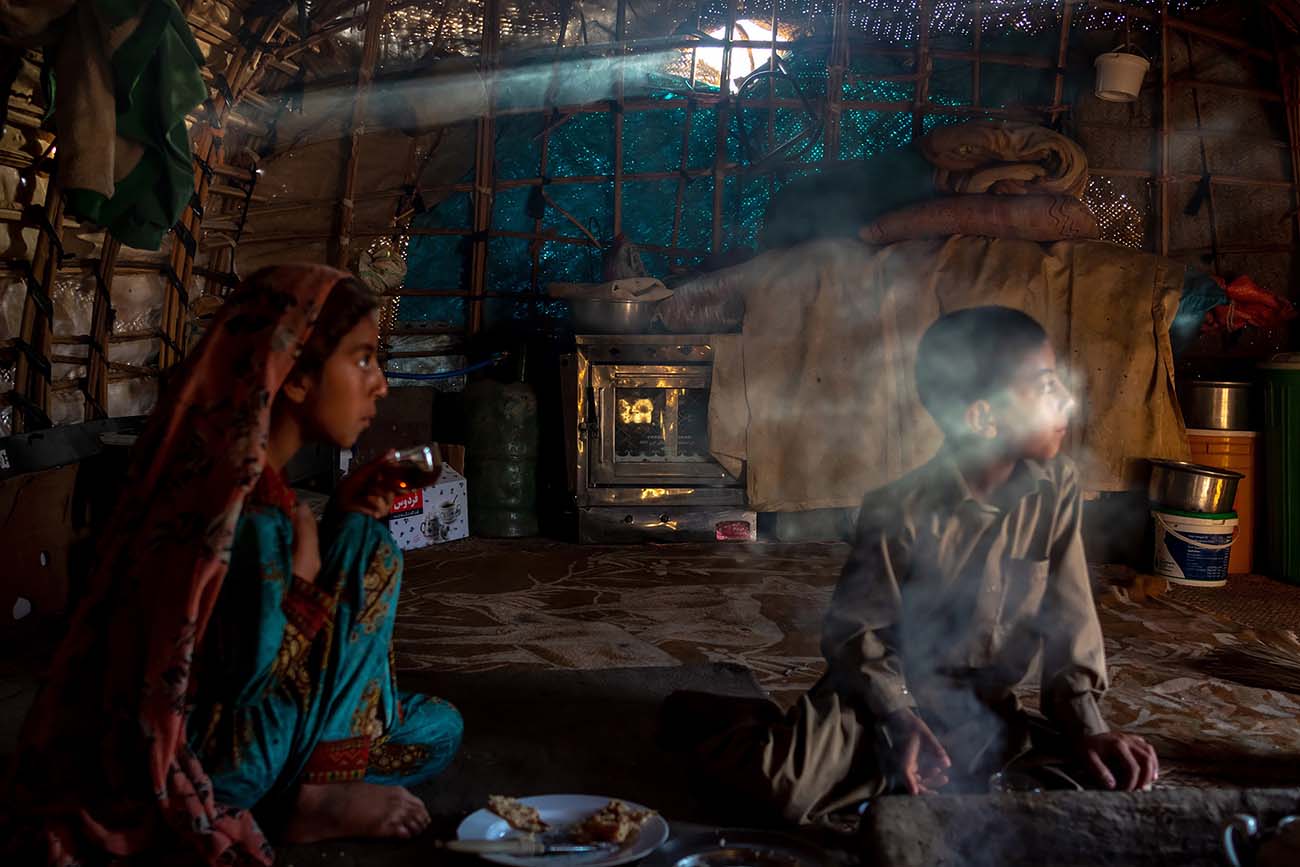
© Sajedeh Zarei
Yasaman (10, left) and Mahdi (8, right) are eating breakfast. Their breakfast includes bread and tea. The village lacks gas piping. So, cooking and heating are provided by firewood collected from the desert. The smoke from burning woods fill the room. Sowlan, Ghalehganj, Kerman province, Iran, 2019.
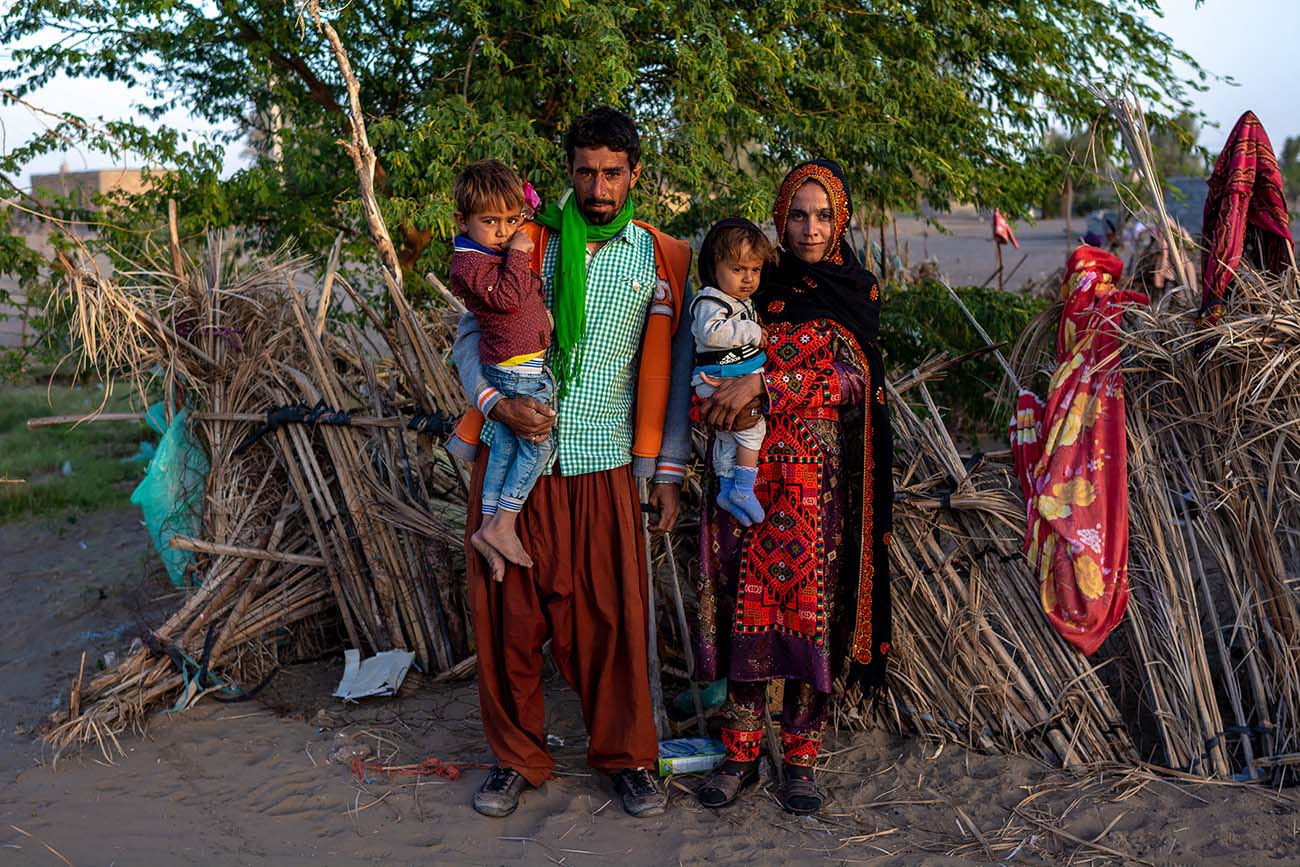
© Sajedeh Zarei
Emad Behzadi (25, left) and Zeinab Poorsiavash (20, right) married 4 years ago. Hadi (3, left) and Mahdi (1, right) are their children. Marriage of underage girls is very common among Baluch. Most women are illiterate and give birth for take of receiving about 45,000 toman (equals 4 US dollars) subsidies per month. They get more subsidies from the government if they have more children. But they have no idea that inflation caused by government pensions (subsidies) makes them poorer every day. Hamideh (18), a woman from the village who got married last year says: "they call you spinster if you are 20 or more but not married yet". She adds, "What can I do but giving birth to more children? We are illiterate, have no special skills and not allowed to leave the village without the permission of the men". Sowlan, Ghalehganj, Kerman province, Iran, 2019.
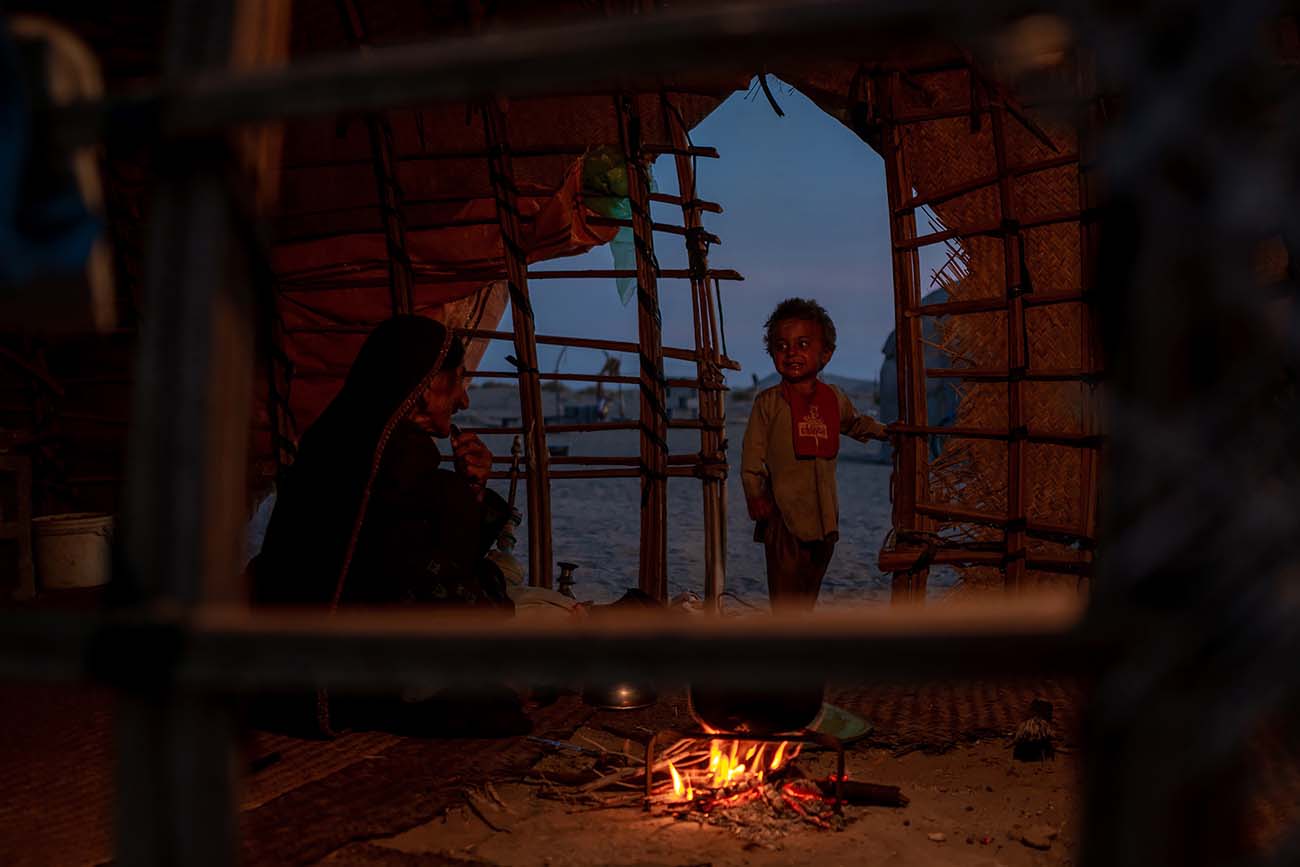
© Sajedeh Zarei
Khodarahm (3, right) at the door of his grandmother's davar, Molouk (left). Khodarahm means blessing from God. His family gave him this nickname because he was born after five daughters and his parents desired to have boys. His name is Amir Reza's at his birth certificate. Sons have a higher position among the baluchs. When Khodarahm was only five months old, her mother became pregnant again. So Molouk takes care of Khodarahm and there is a special relationship between them. Molouk says: "my only hobbies are playing with Khodarahm, smoking and having tea". Sowlan, Ghalehganj, Kerman province, Iran, 2019.
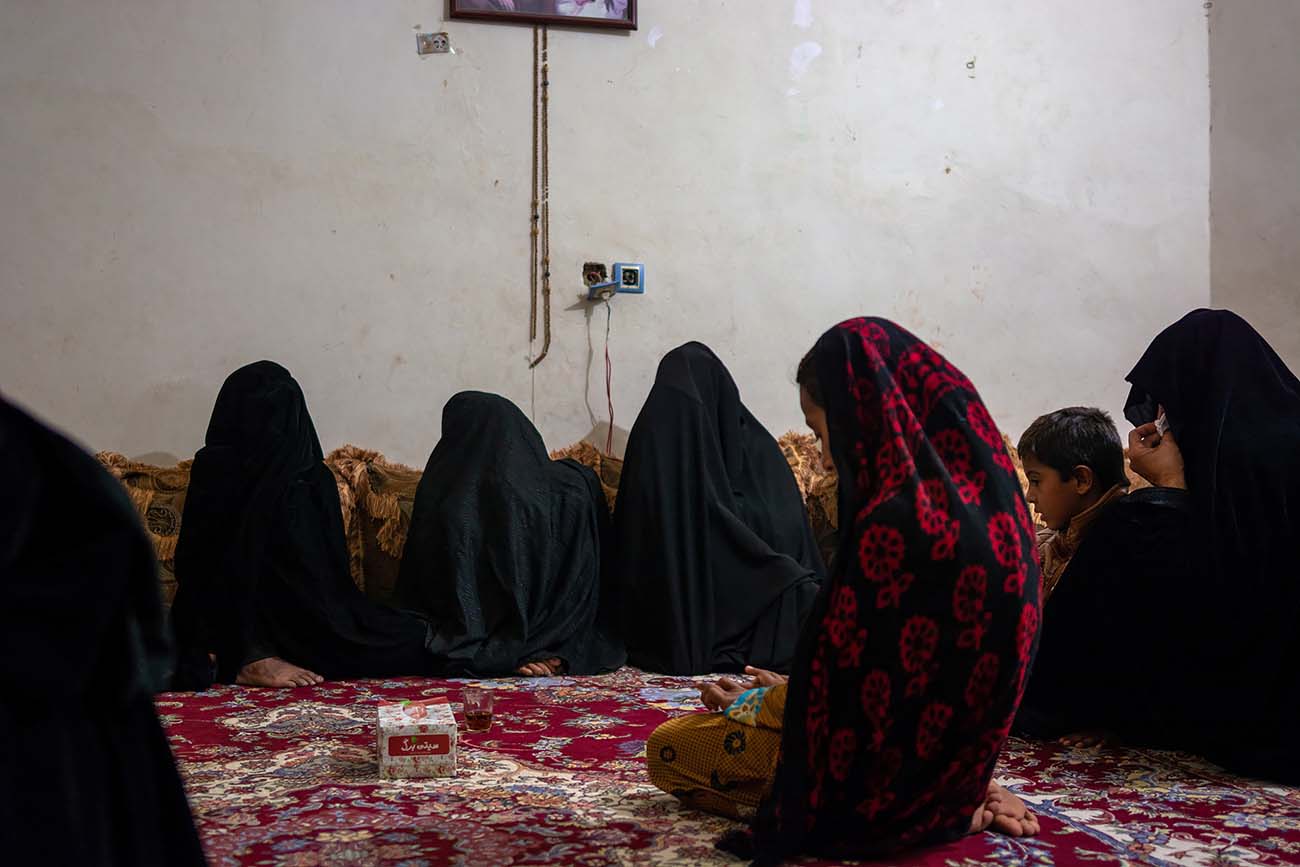
© Sajedeh Zarei
It is a memorial for a six-year-old boy. The kid had died when the air cooler became loose in its place and hit him in his head while he was playing out of the home. Women are mourning. Sowlan, Ghalehganj, Kerman province, Iran, 2019.